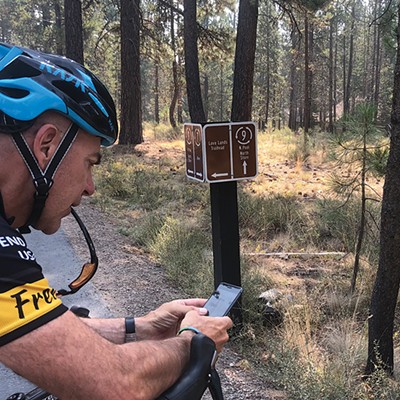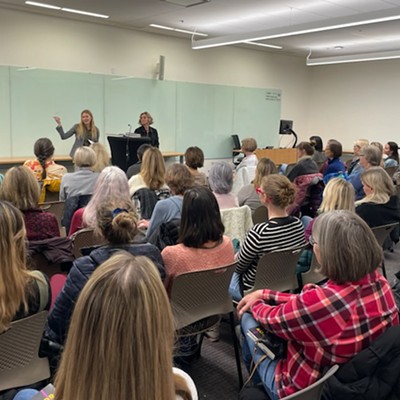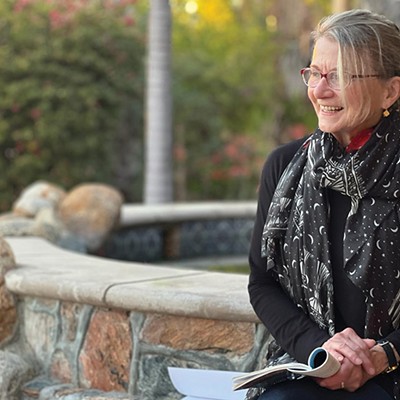Cate O'Hagan has a personal connection to the long ago silenced Celilo Falls, the once-roaring river passage on the Columbia river that sustained countless generations of Native Americans who plucked migrating salmon by the dozens from its churning waters.
O'Hagan's grandfather was an assistant U.S. district attorney in Portland at the time that the U.S. government was negotiating with the tribes around Celilo as it prepared to construct the massive Dalles Dam that would ultimately drown Celilo and the traditional native fishing villages around it. O'Hagan believes her grandfather, who she said ultimately won the trust of the tribal elders, did his best to secure a favorable deal for the Native Americans who were displaced by the dam's construction and the slack water lake that replaced the fishing grounds at Celilo. Tribal members were given modern appliances such as refrigerators and, in some cases, homes to replace their shacks. The federal government also handed out millions of dollars in cash in exchange for the loss of the fishery, which had served as the economic engine of native peoples for millennia. But O'Hagan said she's always carried a sense of sorrow and regret about Celilo and her family's small role in what she now views to be a form of cultural genocide.
"Since I was a small child, I felt horrible about Celilo," said O'Hagan, who grew up in Longview, Wash., and now lives in Bend where she serves as the director of the non-profit arts education group, Arts Central.
"I grew up knowing the history of what happened. It was part of the family lore," said O'Hagan, who heard the stories firsthand from her grandfather.
The story of Celilo came full circle for O'Hagan recently when she got a call from her friend Robin Gyorgyfalvy, the Scenic Byways coordinator for the National Forest Service in Bend. Gyorgyfalvy was interested in bringing the Warm Springs Museum's Celilo Falls exhibit to Bend. The installment, which ran for several years at the Warm Springs Museum to coincide with the 50th anniversary of the flooding of Celilo, consisted of artifacts, photos and video and a large-scale replica of one of the fishing platforms. The exhibit also included archival government film footage of Celilo that played on a loop. Visitors could sit on a bench and watch and hear the falls as they once were.
The exhibit in Bend won't include all of those features, relying largely on the photos and text displays put together by Terrebonne designer Thomas Osborne for the Warm Springs Tribe. O'Hagan, however, said she jumped at the opportunity to bring the Celilo exhibit to Bend. The installment, which officially opened on Friday for the downtown Art Hop, dovetails perfectly with Arts Central's new mission at the former Mirror Pond Gallery, which is tucked behind the Tower Theater on Brooks Street. The building, also known as the historic Rademacher House, served until recently as a gallery for local artists to display their work. Arts Central displayed the pieces and took a small commission from any sales, but the practice was curtailed after Deschutes County tax assessor determined that such commercial activity was not permitted under Arts Central's tax-exempt status. As a result, O'Hagan and Arts Central have turned to exhibits such as the Celilo Falls installment and collaborative displays with arts groups like the Central Oregon Metal Arts Guild to utilize the space once reserved for local and aspiring artists.
"Now that we can't be a gallery, this is kind of thing that makes perfect sense for us to do," O'Hagan said.
The display also represents the first collaboration between Arts Central and the Warm Springs Museum, which O'Hagan said she helped launch more than a decade ago.
Warm Springs Executive Director Carol Leone said the museum was more than happy to loan its exhibit to Arts Central and the Forest Service, which is co-sponsoring the exhibit along with the Bend 2030 committee and the Central Oregon Community College.
While visitors won't get to see all the extra features that Warm Springs Museum initially included, the images and objects that are here, including miniature replicas of the fishing platform used by the native peoples, tell a powerful story of loss that extends beyond just the salmon fishery. Celilo, says Leone, was a cultural and spiritual center - a place where men and women came to fish, but also to trade and interact, drawing indigenous people from around the Northwest and beyond- - a sort of Wall Street on the Columbia, says Leone. When the dam went up in 1957 and the falls fell silent, the tribes lost a piece of their heritage that we are only now beginning to understand in the context of the larger devastation of the Columbia River. It's also part of the larger story of the displacement of Native Americans as part of the settlement of the West that moved native people out of their traditional hunting and fishing grounds like Celilo and onto remote reservations.
Leone said she knows there are plenty of people who didn't have an opportunity to make it to the Warm Springs Museum. This installment will be an opportunity to learn a about piece of Oregon that is gone but should never be forgotten.
"This hasn't stopped. Indigenous peoples and their rights to the land, the water and the plants are still thought of as something that can be taken," Leone said.
The Celilo exhibit, however, reminds us that there are consequences for such cultural contempt.
The Celilo Legend
According to legend, evil creatures built a rock dam at Celilo on the Columbia River to stop the salmon from passing. Coyote came to help the fish, scratching at the dam until the waters ran free. The remains of the dam became Celilo Falls and the creator turned the evil creatures into swallows. Now every year when the swallows appear, the native people know the fish will follow.
More Tributes Planned
The Warm Springs Tribe isn't the only nation to pay tribute to Celilo in recent years. A confederation of tribes along the Columbia River is in the process of raising money to construct a memorial at Celilo. The tribes have contracted with Maya Lin, a renowned artist, responsible for Washington D.C.'s Vietnam Veteran's Memorial. Lin, who has already prepared and displayed a model of the planned installment, intends to build a 300-foot platform that extends into the Columbia from Celilo Park. The walkway is intended to evoke the fishing platforms once used by native peoples at Celilo. The project is part of a larger initiative that includes seven installments by Lin along the Columbia to highlight the importance of the river prior to the arrival of Western settlers. www.confluenceproject.org



















